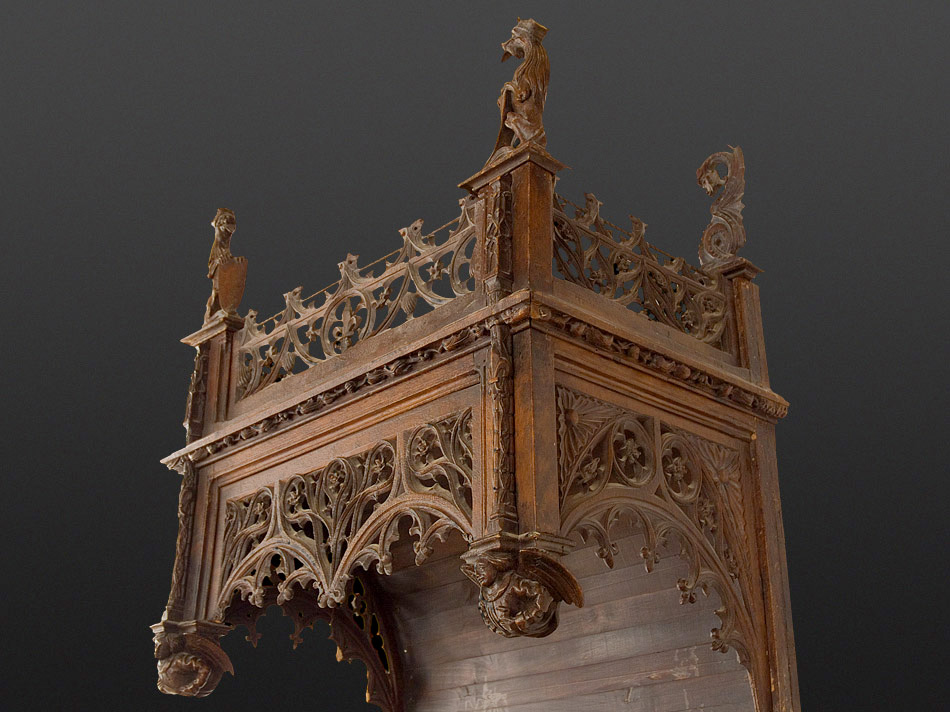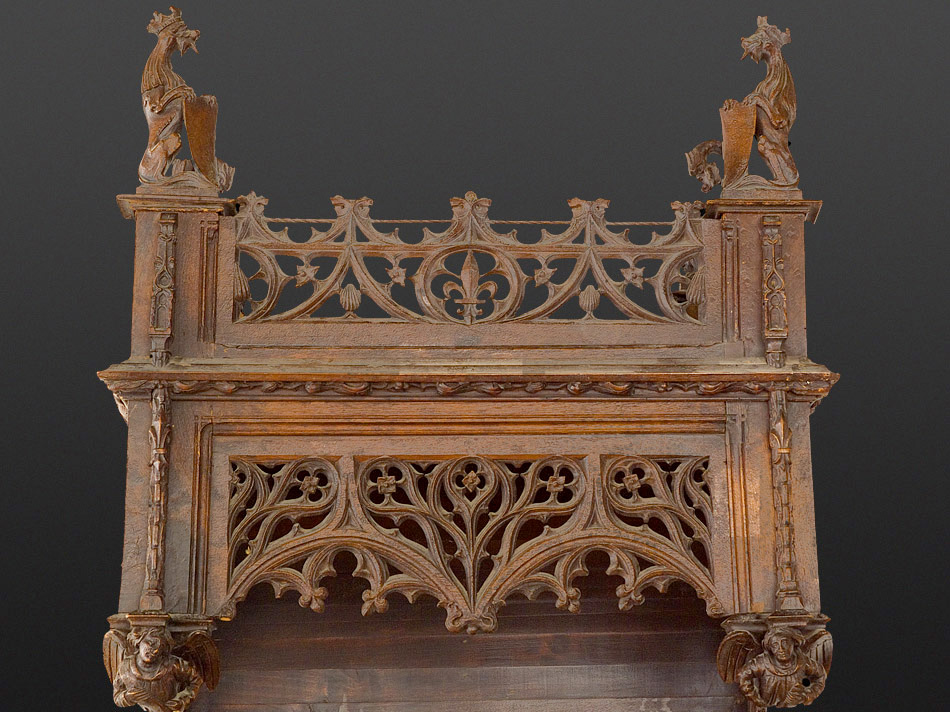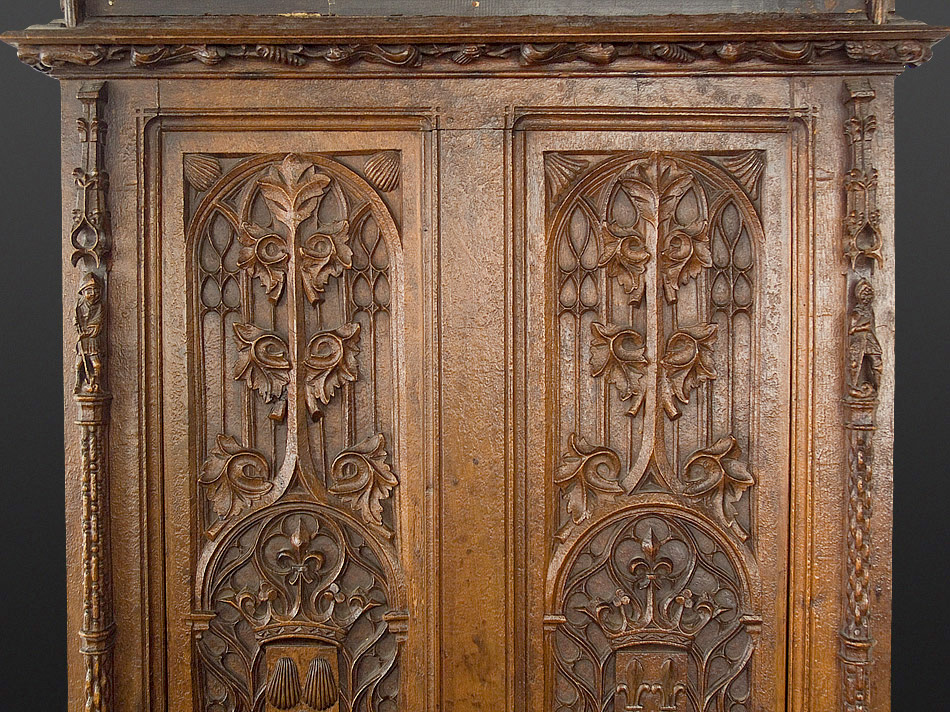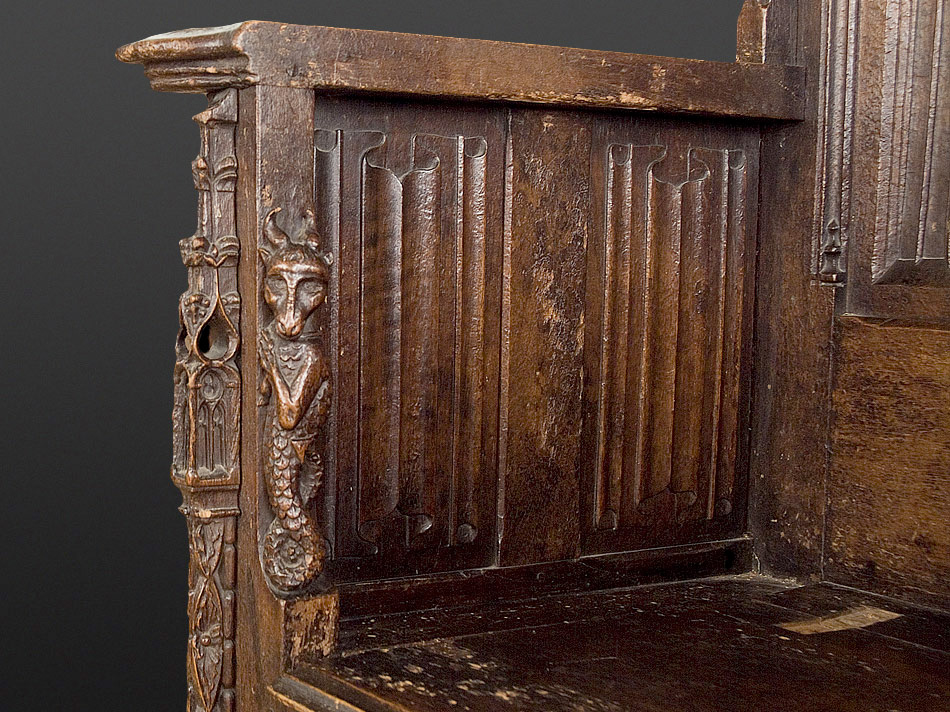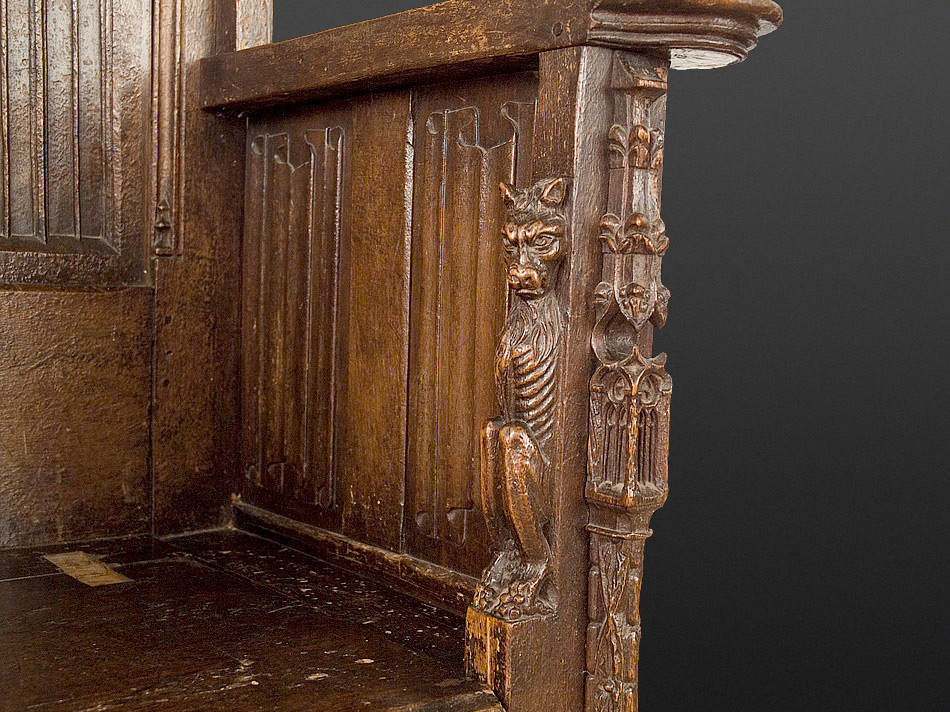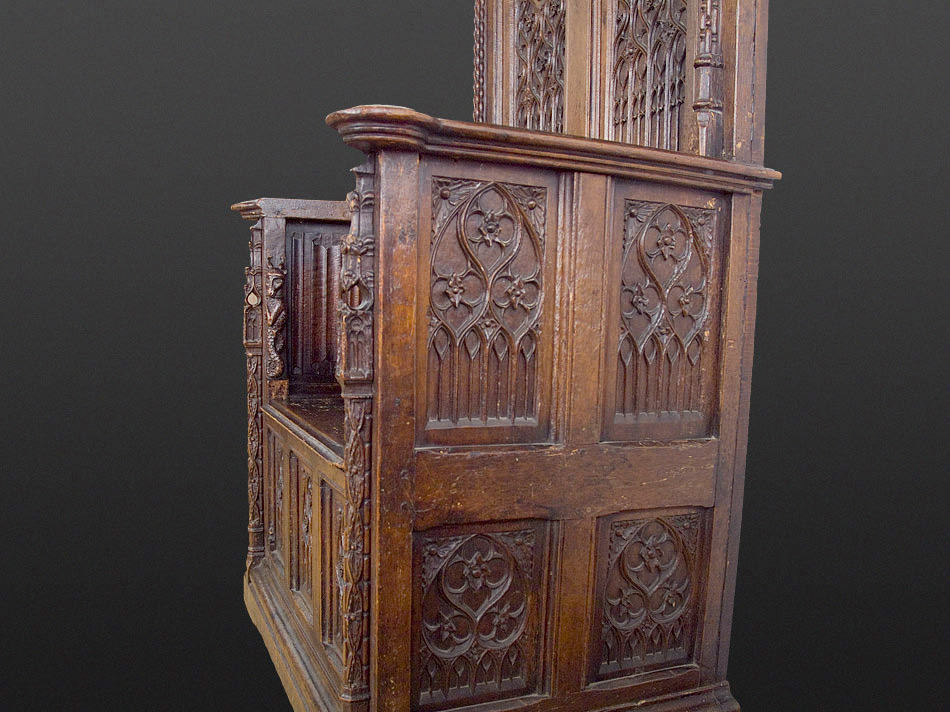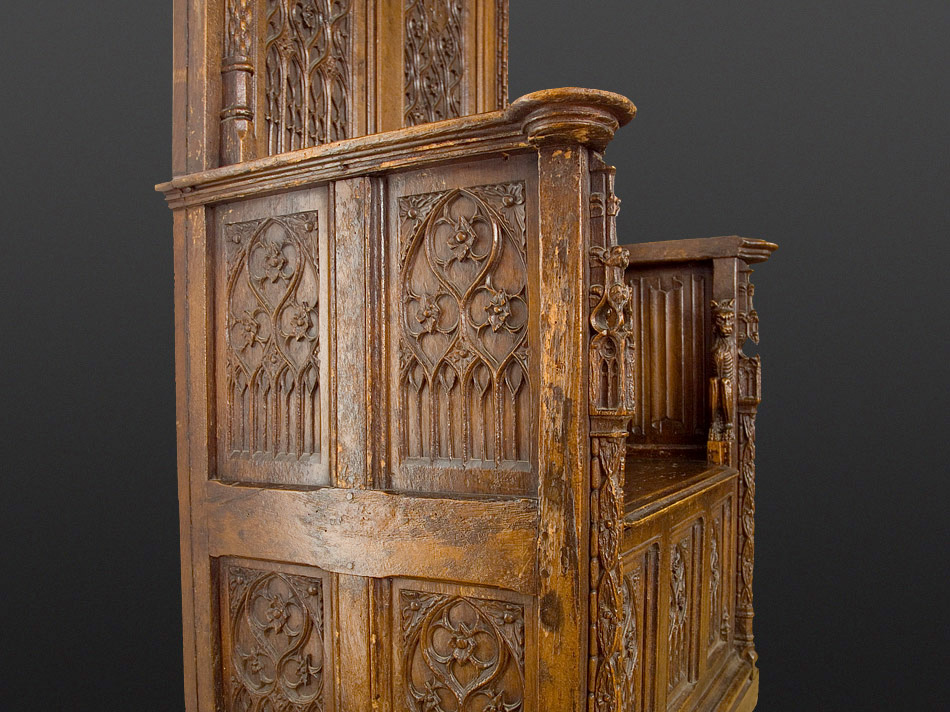Gothic walnut throne chair
Circa 1490
France
W 36" × H 114" × D 24"
Stock # MARH0188
SOLD
Late fifteenth-century French Gothic throne chair of towering proportions (9' 6" high). Crafted in walnut, this chair represents the highest level of workmanship practiced by late-Medieval Continental joiners. Panels on the back and sides are carved with the most developed form of flamboyant tracery that integrates architectural and naturalistic designs, including cusped arches, leaf-and-bud motifs, and three-dimensionally modeled leafage and shells. Inner surfaces of the panels flanking the sitter are further adorned with richly rendered linenfold carving. The meticulously executed framing members display the full range of joiners finishing techniques ranging from incised, compound mouldings to chamfers terminating with cusped stops. Buttresses topped with crocketed spires project from the main posts to simulate the structural components of Medieval stonework. These applied elements are carved with architectural and geometric motifs and human and bestial figures such as the representation of St. George standing triumphant over a slain Dragon that flanks the sitter. A canopy also designed to mimic an architectural feature is suspended above the sitters head. The canopies castellated upper section and curved lower section support openwork tracery panels, a quartet of mythical beasts bearing crowns and shields, and two winged angels that descend as pendants above the sitter.
The complexity, tremendous scale, and overall quality of the chair indicate that it was originally made for a noble, and possibly royal, household. This conclusion is reinforced by the extensive use of fleur-de-lis and shells motifs and the presence of the French royal standard (a shield supporting three fleur-de-lis motifs surmounted by a crown) at the center of one of the back panels. The adjacent back panel bears a similar design that includes the coquille-de-St. Jacques (an arrangement of three clam shells associated with St James of Compostela)
The chair survives in remarkably intact condition having sustained only minor losses and repairs during the course of use.
Old surface with highly developed natural patination – a rare feature as much French high-Gothic furniture has been stripped of all surface history to a light fawn color.
